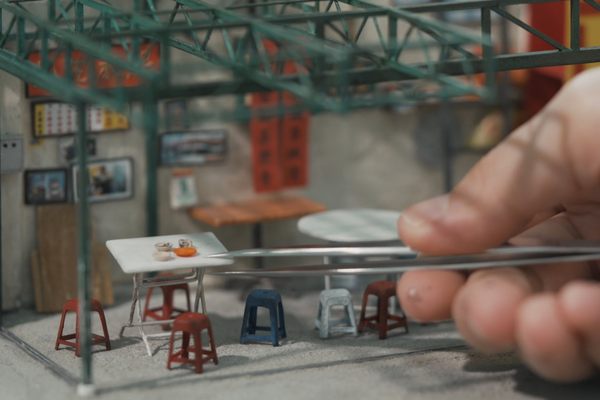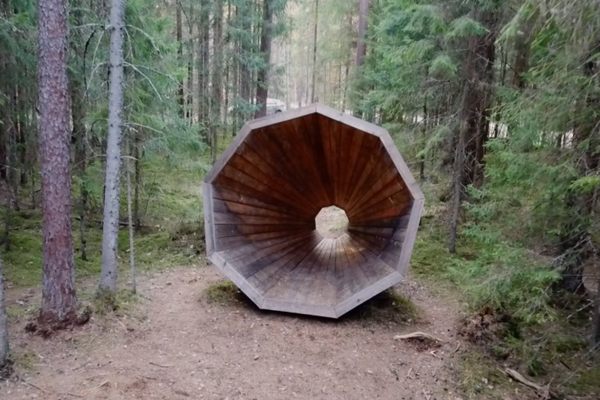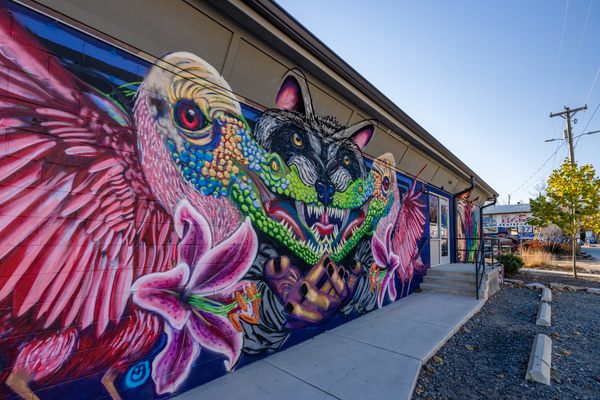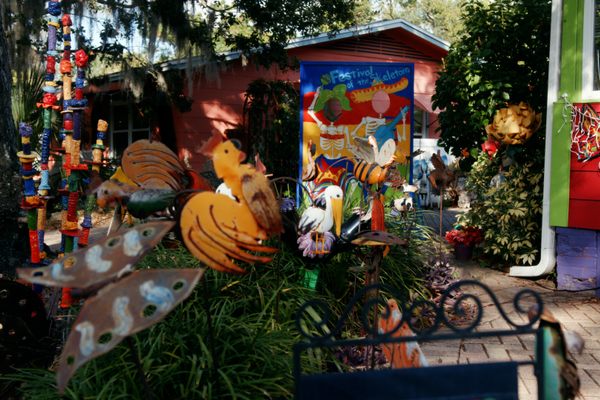The Artist Who Makes Bug Infestations Beautiful
Jennifer Angus has bought thousands of insects in her lifetime.
A close of up of a recent exhibition at the Smithsonian’s Renwick Gallery. (Photo: Roy Blunt)
Jennifer Angus is one of the world’s most prolific bug collectors.
That’s because she’s been an insect artist for the last 17 years, and regularly pins thousands of critters to walls in galleries across the country, most recently, in 2016 alone, at spaces in Seattle, Houston, Virginia, and Wisconsin.
She has so many shows going on at the same time, in fact, that sometimes she runs out of bugs from her collection to use. “I actually like this because it becomes an interesting design challenge,” she says from northern India, where she is currently doing research. “I have three shows up and I only have certain insects left to work with.”

Angus first realized the beauty of bugs in the 1980s in northern Thailand, when she was looking into local dress and came across a “singing shawl,” a garment worn by women that was decorated with beetle wings.
Over a decade later, in 1999, she created her first exhibits, hoping in part to inspire people to think about insects a little differently.
She says she started with the “pretty” insects first, like butterflies, later branching out to include hundreds of other varieties, like those of the order phasmatodea, which she particularly admires. Phasmatodea are a group of insects that have adapted to look, varyingly, like sticks, leafs, and other plant-like objects. ”It’s ingenious!” she says.

(Photo: Roy Blunt)
None of the bugs Angus uses are endangered, but she says she’s still mindful of the ethics of mass bug collecting. She uses farmed bugs when she can, for example, while pointing out that the real threat to bugs is loss of habitat.
“Intellectually, we recognize that forests are the lungs of the planet but not enough is being done to protect this precious resource,” she says. “Virtually every insect on the endangered species list is there because of loss of habitat.”
So, where do Angus’s bugs come from? A bug dealer, of course, in her case a Belgian named Alain van Vyve, who runs a shop called The Bugmaniac. She’s worked with him for many years, and “he knows the type of insects I like.”
The bugs can vary widely in price, but many are listed for around five euros (roughly $5.50) for a small set of three or five. The bugs—dried for preservation—are then shipped to the buyer, having originated from all over the world.
For Angus, choosing which bugs, and how many (Angus buys at much higher volumes than your average collector), is just the start of the process. When she gets them, she then hydrates their bodies to make their wings, legs, and other parts more movable, so it’s easier to craft them into shapes on the wall later–“a fairly labor intensive process.”

(Photo: Roy Blunt)
And that’s all before she actually creates the show, which, in the Smithsonian’s newly reopened Renwick Gallery, took the form of faces and patterns. Each show is different, though, and Angus says it frequently comes down to the space.
“A lot of museums are former mansions or villas that have been converted to galleries. They come with wonderful histories and stories, so sometimes I want to try to use insects that will evoke a former time or art style,” Angus says. “Sometimes I just have a white box.”
When the show’s over, Angus boxes up her bugs and takes them home—she’s had some for up to 15 years. Keeping them makes financial sense, she says, but is also prudent from a moral perspective.
And damaged bugs get re-used, meaning most of her shows end up including a mixture of perfect and imperfect specimens, even if you would have to look pretty closely to figure out which bug had flaws. ”Anything that is damaged I repair, and if it doesn’t look perfect then it goes high up on the wall or low down,” Angus says. “I keep the perfect specimens at eye level and no one really notices imperfections in the others.”
Still, Angus says she sometimes has to resort to playing God, creating new specimens that have never existed. ”If something is beyond repair I transform it into something new—a kind of hybrid species or Frankenstein,” she says, “which is quite fun because it blurs the lines of what is real and what is not.”
























Follow us on Twitter to get the latest on the world's hidden wonders.
Like us on Facebook to get the latest on the world's hidden wonders.
Follow us on Twitter Like us on Facebook